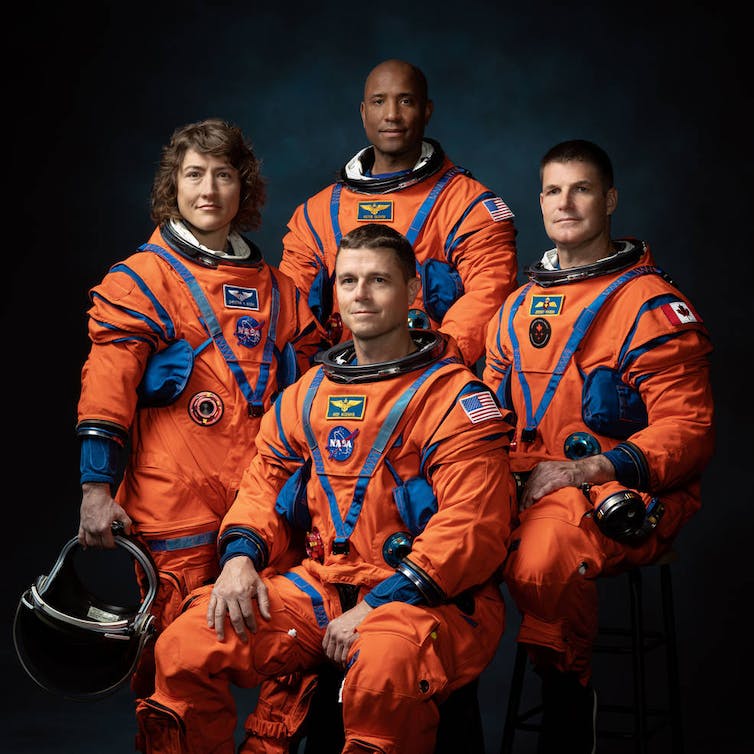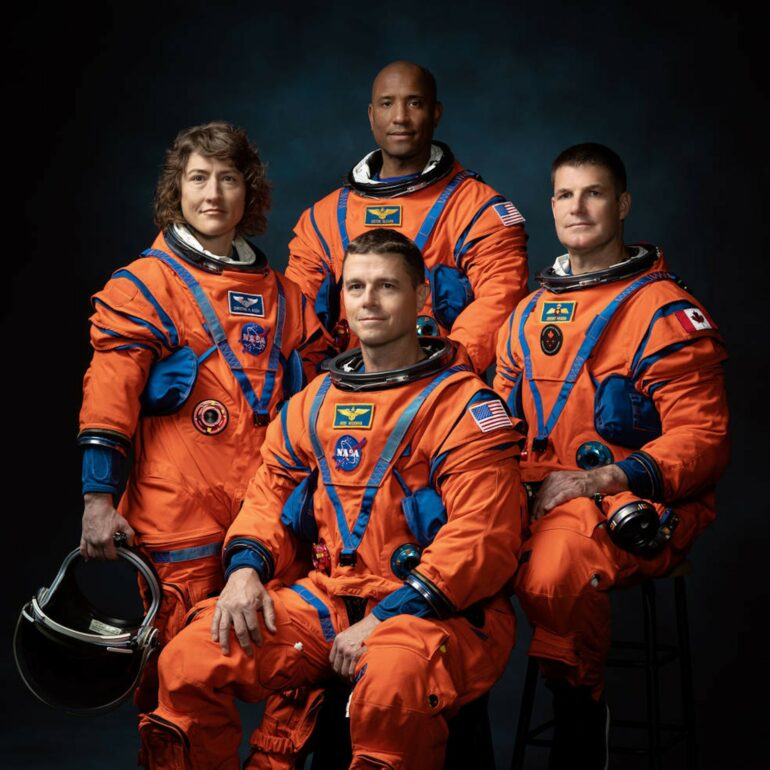On April 3, 2023, NASA announced the four astronauts who will make up the crew of Artemis II, which is scheduled to launch in late 2024. The Artemis II mission will send these four astronauts on a 10-day mission that culminates in a flyby of the Moon. While they won’t head to the surface, they will be the first people to leave Earth’s immediate vicinity and be the first near the Moon in more than 50 years.
This mission will test the technology and equipment that’s necessary for future lunar landings and is a significant step on NASA’s planned journey back to the surface of the Moon. As part of this next era in lunar and space exploration, NASA has outlined a few clear goals. The agency is hoping to inspire young people to get interested in space, to make the broader Artemis program more economically and politically sustainable and, finally, to continue encouraging international collaboration on future missions.
From my perspective as a space policy expert, the four Artemis II astronauts fully embody these goals.

Crew members of the Artemis II mission are NASA astronauts Christina Hammock Koch, Reid Wiseman and Victor Glover and Canadian Space Agency astronaut Jeremy Hansen.
NASA
Who are the four astronauts?
The four members of the Artemis II crew are highly experienced, with three of them having flown in space previously. The one rookie flying onboard is notably representing Canada, making this an international mission, as well.
The commander of the mission will be Reid Wiseman, a naval aviator and test pilot. On his previous mission to the International Space Station, he spent 165 days in space and completed a record of 82 hours of experiments in just one week. Wiseman was also the chief of the U.S. astronaut office from 2020 to 2023.
Serving as pilot is Victor Glover. After flying more than 3,000 hours in more than 40 different aircraft, Glover was selected for the astronaut corps in 2013. He was the pilot for the Crew-1 mission, the first mission that used a SpaceX rocket and capsule to bring astronauts to the International Space Station, and served as a flight engineer on the ISS.
The lone woman on the crew is mission specialist Christina Hammock Koch. She has spent 328 days in space, more than any other woman, across the three ISS expeditions. She has also participated in six different spacewalks, including the first three all-women spacewalks. Koch is an engineer by trade, having previously worked at NASA’s Goddard Space Flight Center.
The crew will be rounded out by a Canadian, Jeremy Hansen. Though a spaceflight rookie, he has participated in space simulations like NEEMO 19, in which he lived in a facility on the ocean floor to simulate deep space exploration. Before being selected to Canada’s astronaut corps in 2009, he was an F-18 pilot in the Royal Canadian Air Force.
These four astronauts have followed pretty typical paths to space. Like the Apollo astronauts,…
